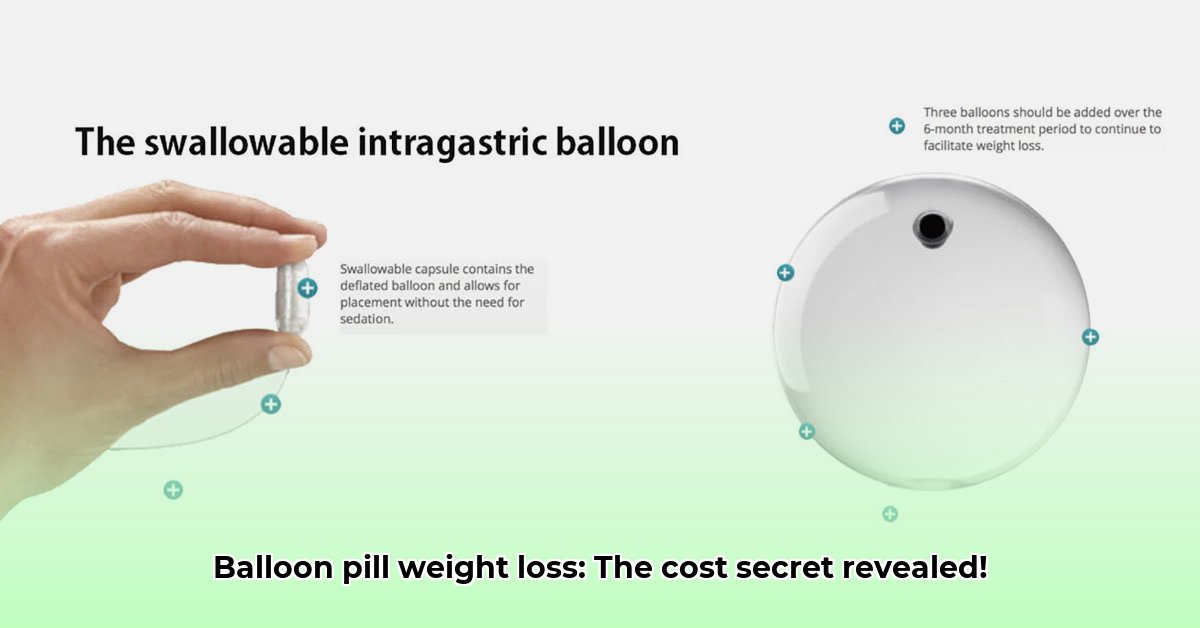
Balloon Pill for Weight Loss: Cost, Promise, and Reality
The prospect of a tiny, ingestible device aiding weight loss is gaining traction. Early research on a vibrating pill, currently tested on animal models, suggests a potential to significantly reduce food intake. But before getting ahead of ourselves, let's delve into the complexities surrounding this innovative technology, focusing on its potential cost and the long road ahead.
How the Vibrating Pill Works
This isn't your average diet pill. The pill, once ingested, gently vibrates within the stomach. Preclinical studies, primarily using pigs, indicate this vibration subtly influences appetite-regulating hormones. One study reported a remarkable 40% reduction in food consumption in pigs receiving the vibrating treatment. 1 However, it’s crucial to remember these are animal studies; extrapolating these results to humans requires extensive human trials.
What Will It Cost? Early Speculations
While human trials are still pending, early projections suggest the vibrating pill could be significantly cheaper than existing weight-loss procedures like gastric balloons, which can cost $6,000-$10,000. The pill's simpler design could translate to lower manufacturing costs.
However, several factors will influence the final price:
- Mass Production: Economies of scale will play a crucial role in reducing the cost per pill.
- Regulatory Approval: Securing FDA approval is a complex and expensive process, impacting the final cost.
- Materials and Manufacturing: The cost of materials used in the pill's construction will directly influence its price.
- Marketing and Distribution: Marketing expenses and retailer markups will add to the final price consumers pay.
Weighing the Potential Benefits and Risks
The potential benefits are substantial: a potentially cheaper, more accessible weight-loss option compared to other advanced treatments. However, significant risks and uncertainties remain:
- Lack of Human Data: Existing data is limited to preclinical studies. Large-scale human trials are needed to verify the pill's efficacy and safety.
- Long-term Effects Unknown: The long-term effects of the pill's vibrational stimulation on the body are currently unknown.
- FDA Approval Pending: FDA approval remains a crucial hurdle, requiring extensive testing and review.
How Effective Is This Pill for Weight Loss in Humans? - A Critical Look
While promising animal studies hint at potential, the crucial question remains: how effectively will this translate to human weight loss? This requires rigorous human trials, addressing:
- Dosage and Stimulation: Finding the optimal vibration level for efficacy without causing adverse effects is paramount.
- Individual Variability: The response to the pill may vary depending on individual factors like metabolism and body composition.
- Potential Side Effects: Long-term effects and potential side effects are largely unknown and need thorough investigation.
Dr. Anya Sharma, Gastroenterologist at Stanford University Medical Center, emphasizes, "While preclinical data is promising, it's crucial to understand that translation to humans is neither guaranteed nor immediate. Rigorous clinical trials are essential to determine efficacy and safety before making any definitive claims".
The Future of the Vibrating Weight-Loss Pill
The vibrating pill presents a potentially revolutionary approach to weight management. The promise of a more affordable and accessible solution is significant. However, tempered optimism is warranted. The success of this technology hinges on robust human clinical trials, securing FDA approval, and a comprehensive understanding of its long-term safety profile. This is a journey that requires patience and further research.